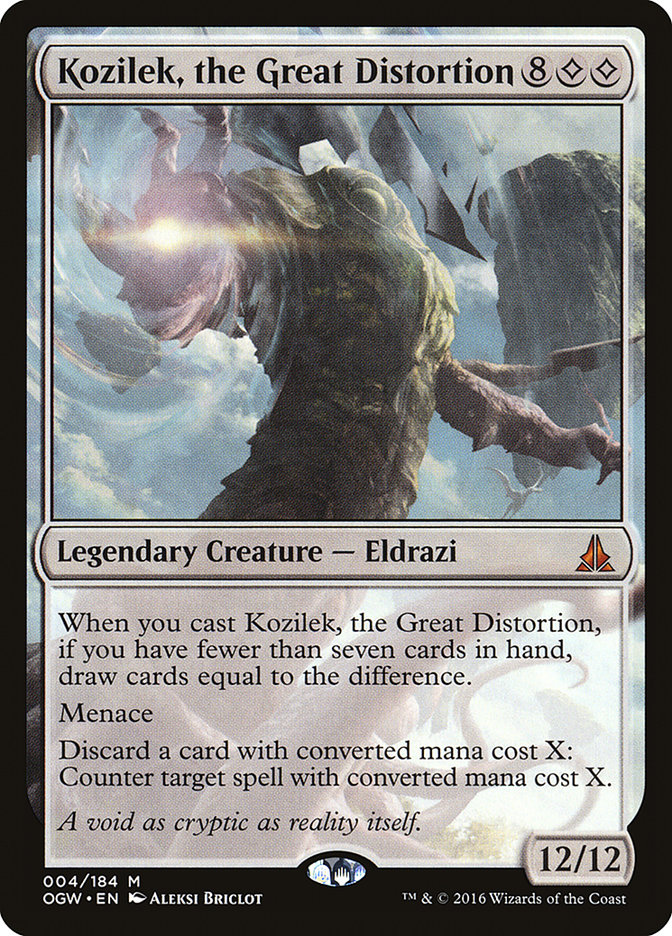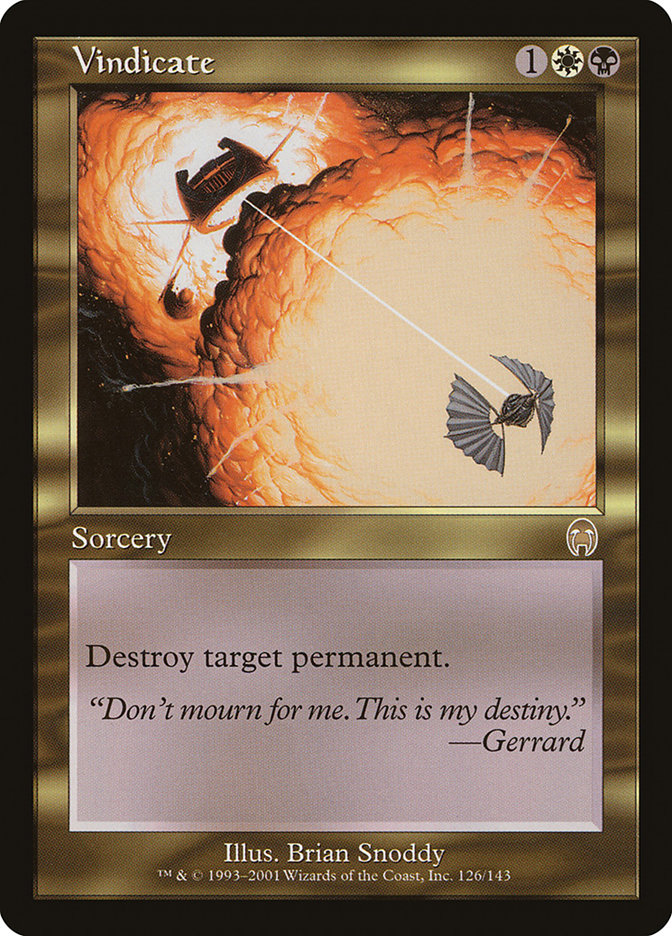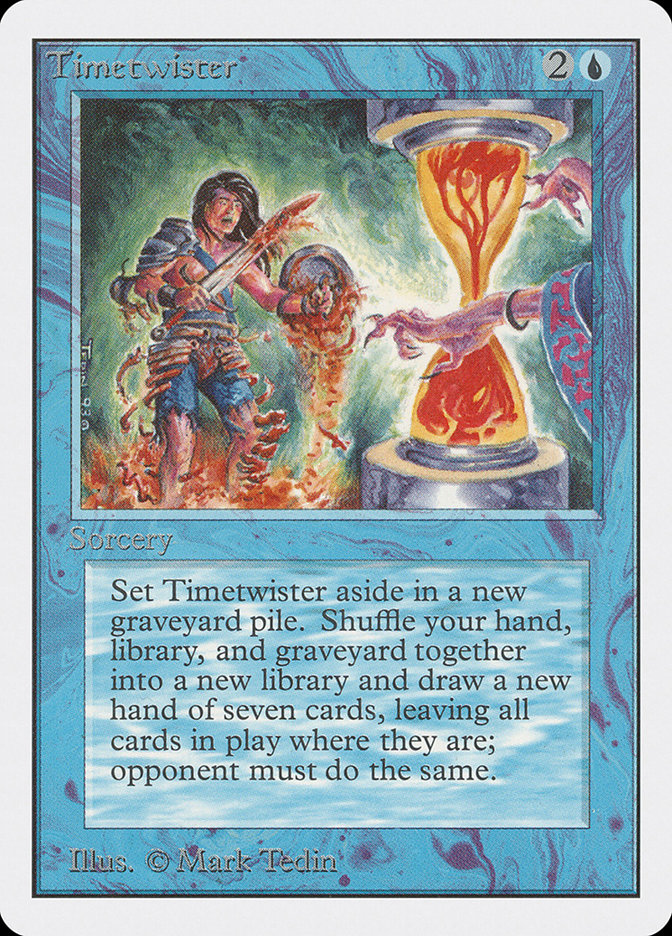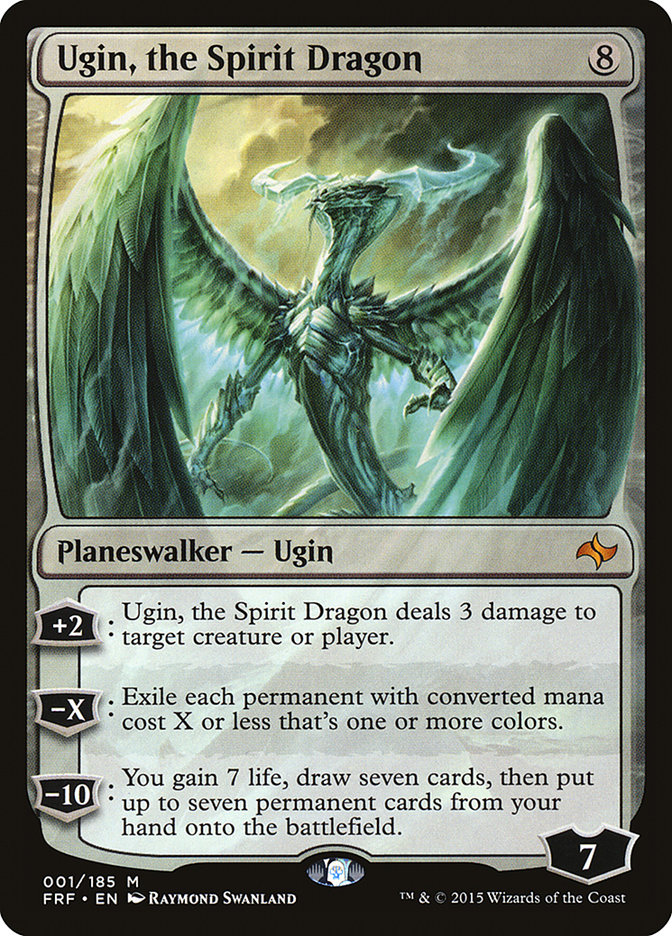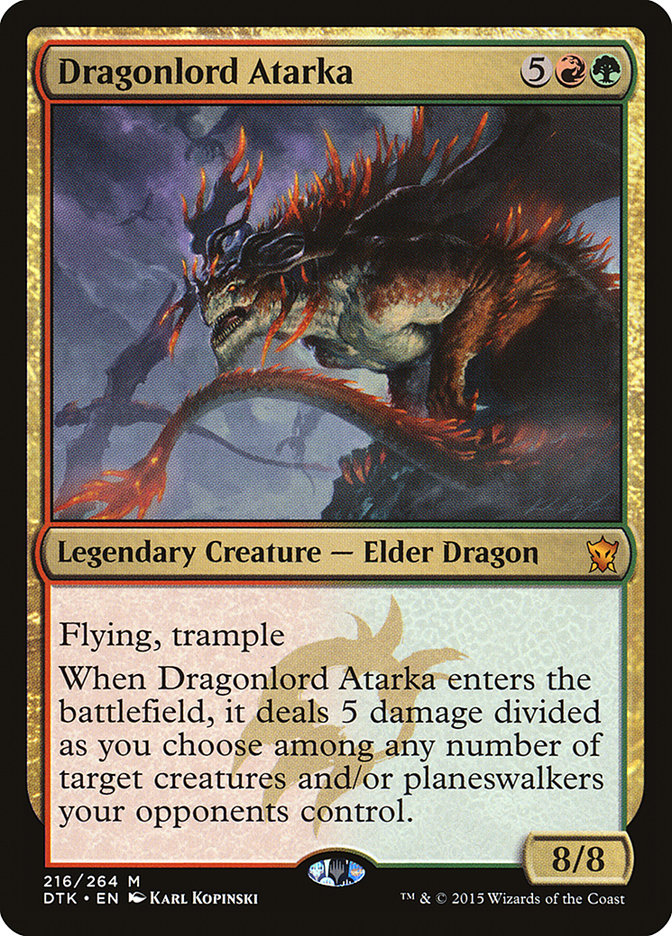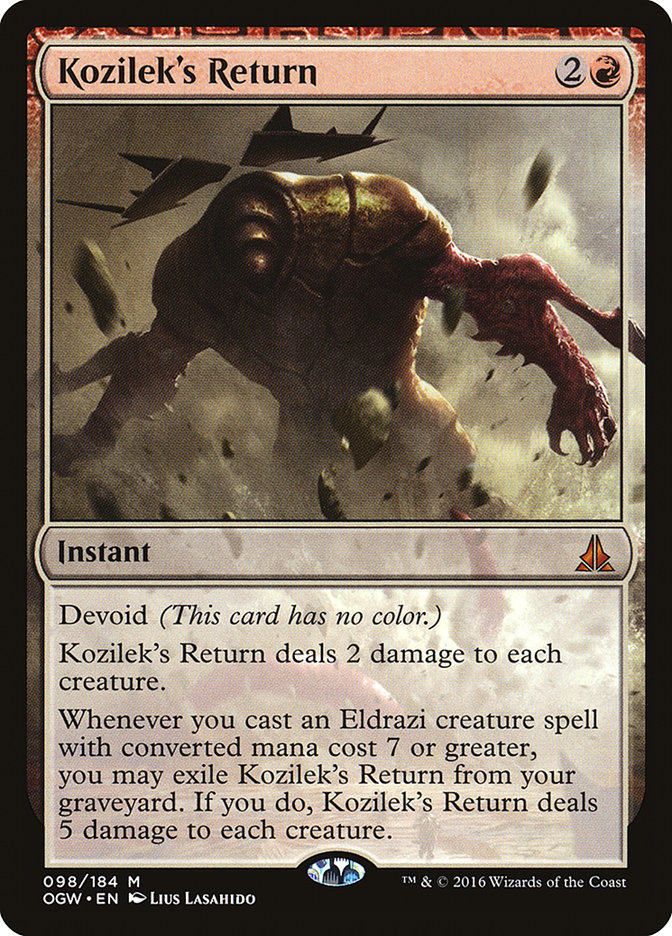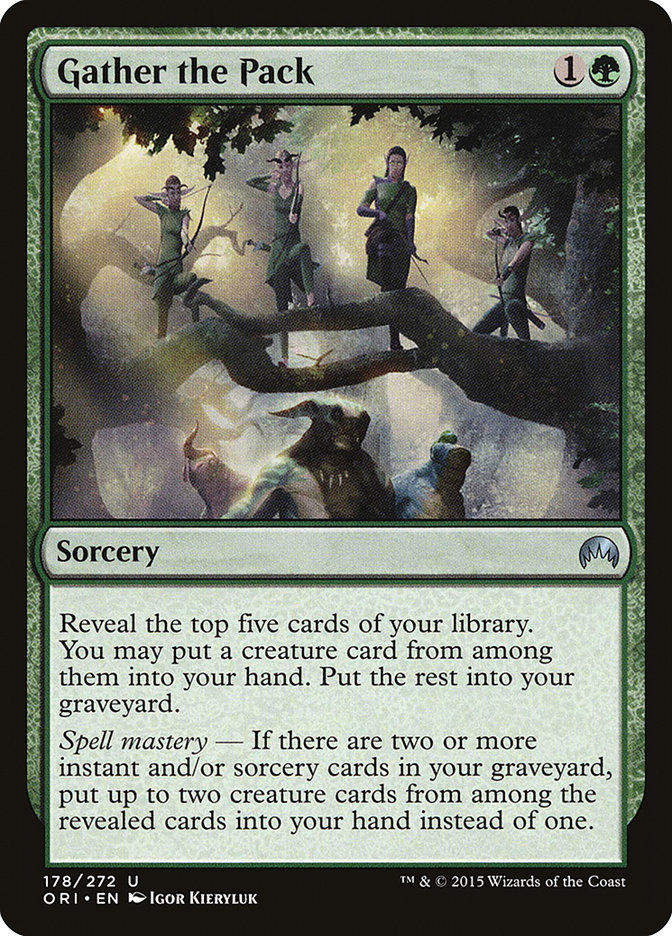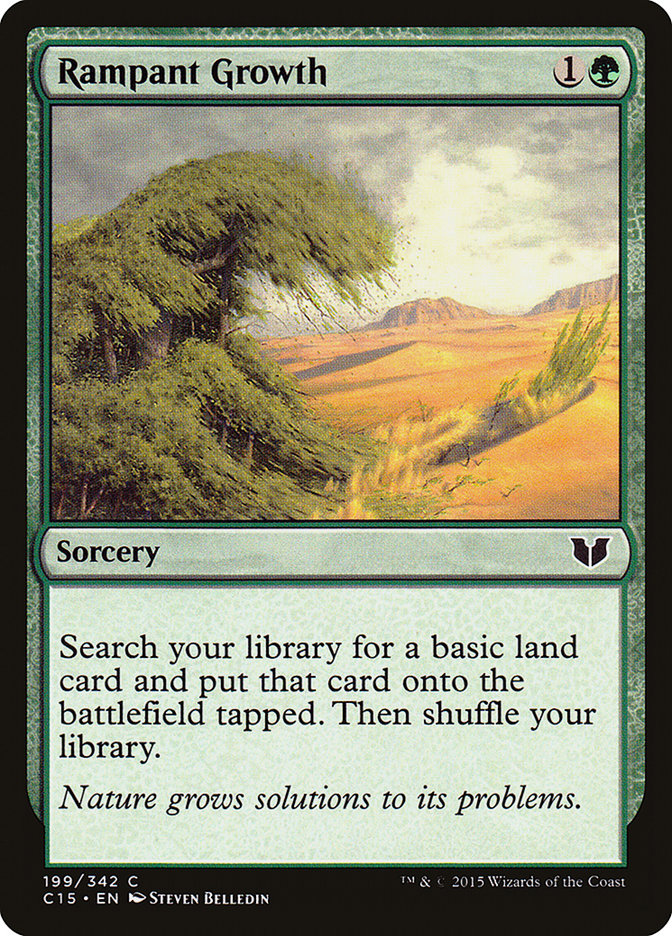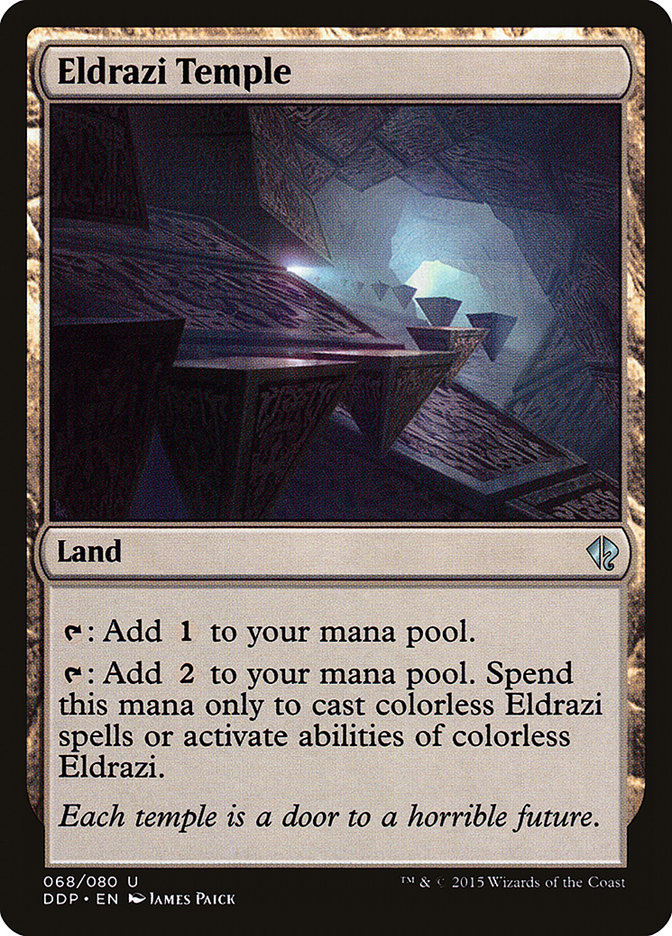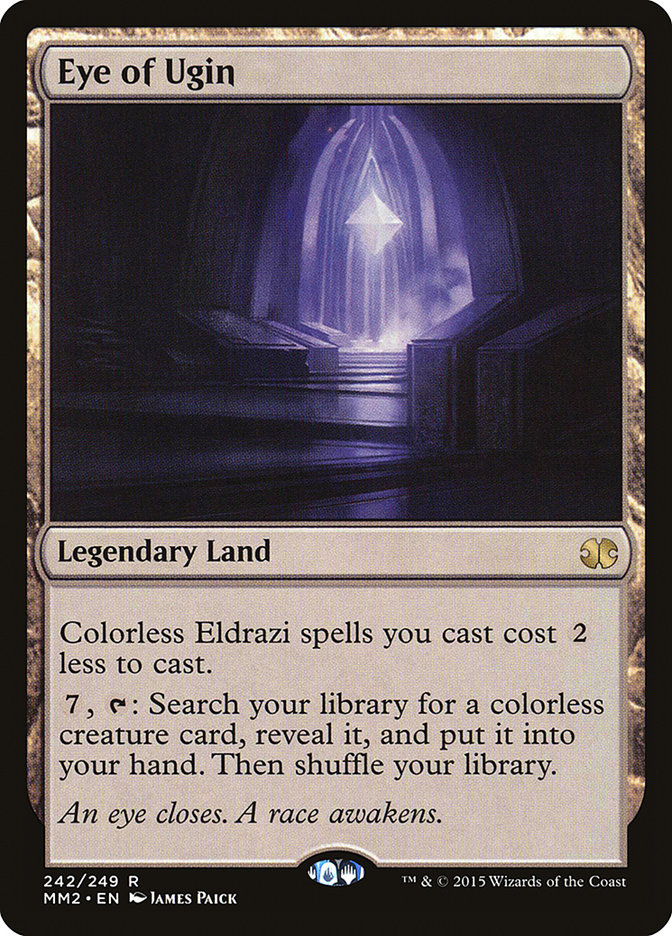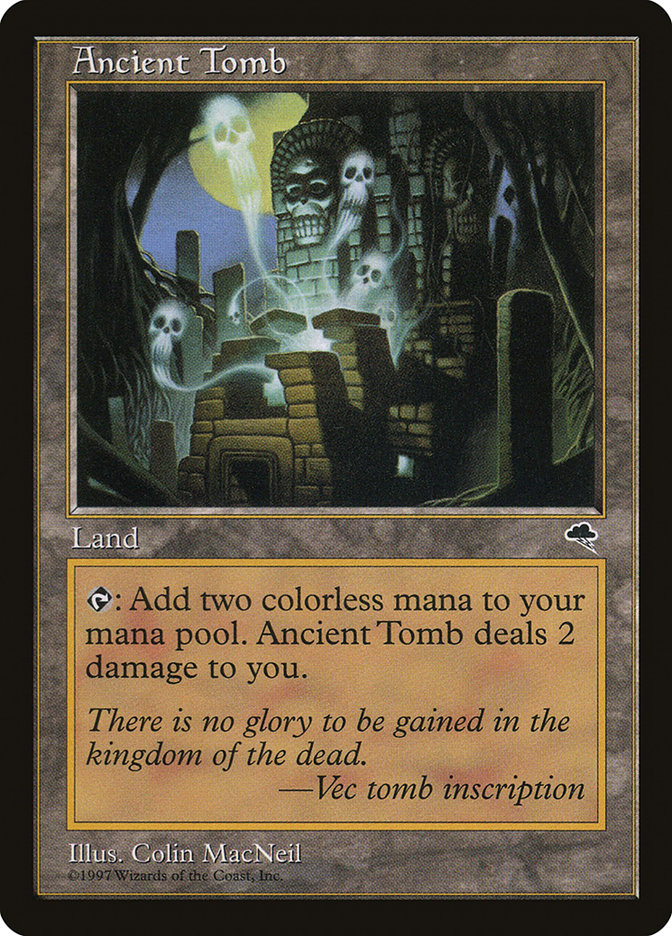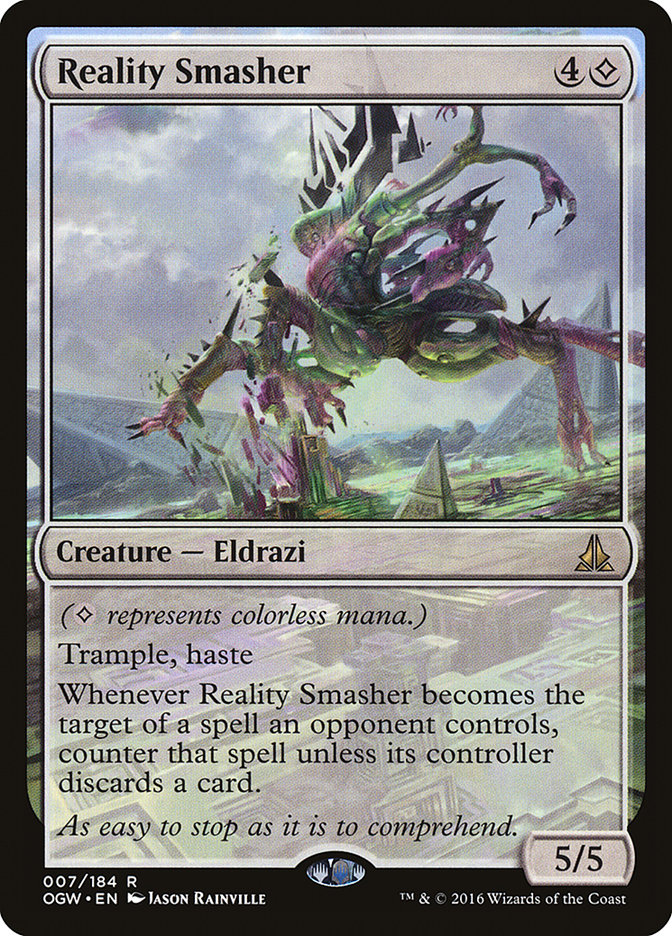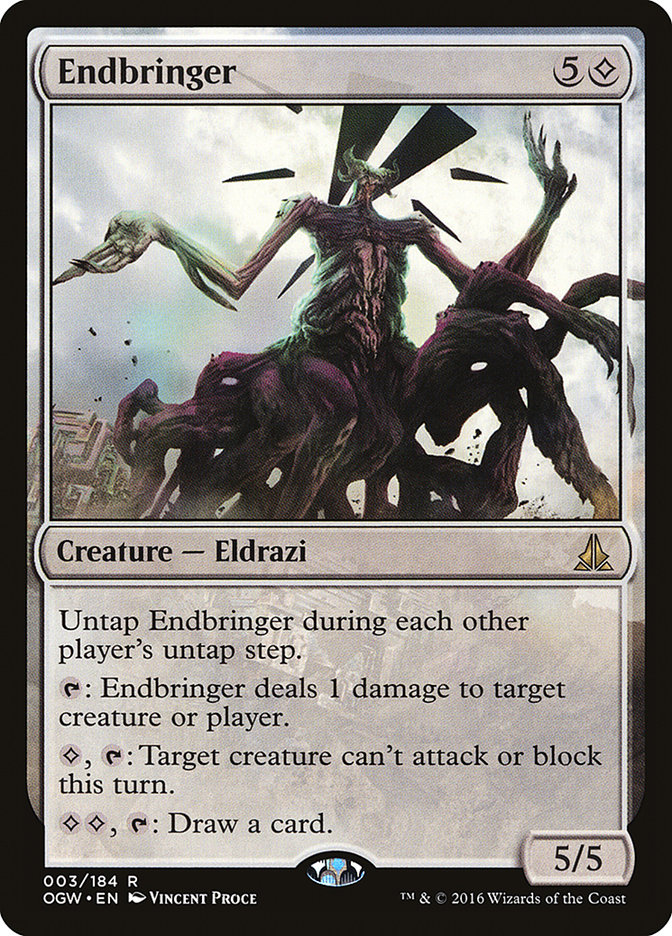They are coming.
You thought they were already here, but you had no idea.
From the Wastes, new Eldrazi have come to wrap their tentacles around both Standard and Modern.
Both Standard and Modern currently have decks based around Eldrazi, but both are also on the fringes of their respective formats. Yet, despite the efforts of the planeswalkers and their silly little oath, reinforcements are coming with Oath of the Gatewatch. Kozilek is returning, and he is bringing with him quite the collection of new Eldrazi. Standard has some hope, but Modern will never be the same.
Creatures (18)
- 2 Dragonlord Atarka
- 2 Den Protector
- 4 Hangarback Walker
- 2 Oblivion Sower
- 4 Ulamog, the Ceaseless Hunger
- 4 Jaddi Offshoot
Planeswalkers (4)
Lands (25)
Spells (13)

The G/R Eldrazi Ramp was a great choice at #SCGPC because it was a great metagame deck. The deck is not extraordinarily powerful, and while it struggles against Atarka’s Command and Rally the Ancestors decks, I did not expect to have to play against those. My predictions were accurate, and I ended up in a field of good matchups, but with new tools from Oath of the Gatewatch, G/R Eldrazi may end up being one of the top decks in the format.
The biggest and baddest card on the Oath of the Gatewatch spoiler also happens to be the most exciting card for the Eldrazi Ramp deck as well. Ulamog, the Ceaseless Hunger is the gold standard for “really freaking expensive and a huge threat” in Standard right now, but Kozilek is just as awesome in many different ways.
Exiling two permanents is an extremely powerful effect, and there’s no way that Kozilek will be replacing Ulamog completely. However, one of the biggest issues that ramp decks usually have is that they run out of gas if the first threat doesn’t stick. Sanctum of Ugin does a lot to mitigate this, but playing Kozilek and getting to draw five or six cards is extremely powerful. The fact that you can use some of those cards to answer your opponent’s follow up is also extremely powerful, and the 12/12 body with menace is no joke either.
Needing colorless mana should not be an issue, as the deck already plays a number of colorless lands. Shrine of the Forsaken Gods can do all the work by itself, and by the time you get to ten mana you should be good. It is also possible to play a single Wastes to find with Explosive Vegetation to help out as well.
The issue is that Kozilek does not directly affect the board.
The hallmark of all of the threats in the deck is that they have a direct and immediate impact on the board when they are cast. Even if your opponent has a Crackling Doom or an Utter End to answer your threat, you will have at least done major damage to their board and bought yourself time to find more threats. Ramp decks often play from behind, and your big payoff card must be able to beat the board or it’s often not going to matter. Drawing cards is awesome, but if you never live to cast them, they don’t really matter.
Luckily for Kozilek, there is another Oath of the Gatewatch card that does the work for him.
Kozilek’s Return is a very interesting card. It occupies a rather awkward spot on the curve in the deck, but also does a great job slowing early aggression and answering some of the problem cards for the deck. More importantly, it provides a major cleanup the turn you cast one of your Eldrazi and teams up with Kozilek to create an almost unbeatable pairing. If you are able to play a Kozilek and trigger Kozilek’s Return to wipe your opponent’s board, draw a bunch of cards, and make yourself able to discard to counter your opponent’s new threats, that is pretty much going to lock up any game.
The question is if Kozilek’s Return is a maindeckable card and how can we maximize it. Of course, we can just play it in our green and red deck. It is awkward that it has the same mana cost as our ramp spells and doesn’t kill some of the creatures in the format, but it just may be good enough.
But there is another option.
Even though Kozilek’s Return costs red mana to cast, the graveyard trigger does not require you to actually be playing red in your deck. The deck also has a serious lack of two-mana plays, meaning you could move into blue instead of red for Jace, Vryn’s Prodigy and Gather the Pack. Both do a great job of putting cards in your graveyard to help set up Kozilek’s Return while also smoothing out your draws and making sure you have a good amount of ramp and threats.
Removing red for blue does change the deck rather drastically, but it is an interesting option.
Unfortunately, the biggest issue for the deck at the moment is the lack of a good two- mana ramp spell. Nissa’s Pilgrimage and Explosive Vegetation are both fine, but mana creatures like Rattleclaw Mystic are very fragile, don’t play well with sweepers, and don’t add to your land count for Shrine of the Forsaken Gods. There are still many commons and uncommons to be spoiled in Oath of the Gatewatch, so hopefully there is a good Rampant Growth variant among them.
Creatures (14)
Planeswalkers (1)
Lands (25)
Spells (20)

Of course, Standard G/R Eldrazi is not the only Eldrazi deck making waves.
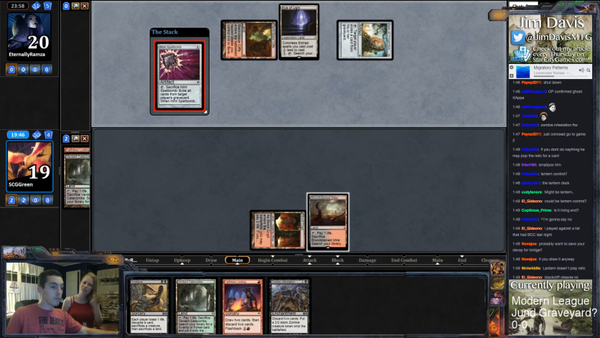
I first ran into this deck a few months ago when I first started streaming. I saw Raphael Levy’s graveyard/Life from the Loam deck, thought it looked cool, and loaded it up. Of course, my first game of round one my opponent goes turn 1 Relic of Progenitus, turn 2 Nihil Spellbomb.
Game 1.
Maindeck.
Vomit.
At the time I thought the deck was just some amusing deck someone had thrown together to make my life miserable, but it turns out the deck actually has some legs. It has been creeping around on Magic Online for the last month or so, and finally almost had a breakout performance last weekend at #SCGCIN where Matthew Dilks took it all the way to 10th place.
Eldrazi Temple and Eye of Ugin are both completely unreal in this deck, as they act like Ancient Tombs with no drawbacks. If you play an Urborg, Tomb of Yawgmoth, Eye of Ugin goes from Ancient Tomb to Mishra’s Workshop. Just like Mishra’s Workshop makes cards like Juggernaut and Slash Panther playable, Eldrazi Temple and Eye of Ugin have made mediocre cards like Blight Herder and Oblivion Sower playable as well.
Well if the deck had legs before, Oath of the Gatewatch gives it super-powered cyborg implants. The colorless Eldrazi theme has been pushed extremely hard, and there are a number of very powerful new options that blow Blight Herder and Oblivion Sower out of the water.
Even without the Modern-legal Eldrazi lands, Thought-Knot Seer is already a solid Magic card. It has a very good-sized body that is immune to Lightning Bolt and comes with a Thoughtseize stapled to it. This is already a very good deal for four mana in Standard, but in Modern it is easy to cast this card on turn 2! On your best draws, Thought-Knot Seer is going to be a Vintage quality card; on your worst draws, it is going to be a good Standard card. That’s a huge step up in quality from something like Oblivion Sower, which is good when you can cheat it out quickly but pretty mediocre otherwise.
Make no mistake about it— Thought-Knot Seer is going to push the Modern Eldrazi deck from a fringe deck to a major player in the format. The card is just so perfectly suited for the deck and the format it’s almost comical. It passes basically every test a Modern card must pass:
· It’s a good-sized, proactive threat
· It can come down on turn 2
· It has a powerful built-in disruption effect
· It is immune to a number of the formats best removal spells, like Lightning Bolt and Abrupt Decay
Expect to get very tired of playing against this card in the future.
If Thought-Knot Seer was the only new card the Modern Eldrazi deck got, I still think it would be enough to push it as a serious contender, but as the late Billy Mays would say… “but that’s not all!”
Reality Smasher is another very reasonable Standard card that starts to get way out of hand if you can cast it quickly. While Thought-Knot Seer is more of a complete package, Reality Smasher has one thing in mind: smashing. Reality Smasher hits hard and fast, and is a very quick clock. It also passes the removal test, as it is immune to spells like Lightning Bolt and Abrupt Decay just like Thought-Knot Seer, but even if they can tag it with a Path to Exile, it still gains you value.
There’s going to be games in Oath of the Gatewatch Modern where your opponent goes turn 2 Thought-Knot Seer, turn 3 Reality Smasher, and those games are going to be very hard to win. And don’t think it’s that difficult; with Urborg, Tomb of Yawgmoth allowing Eye of Ugin to tap for mana, there are many combinations between Urborg, Eye of Ugin, and Eldrazi Temple that can make four Eldrazi mana on turn 2. Don’t say you haven’t been warned.
There are a few other colorless Eldrazi options for the deck, but they don’t stack up nearly as well. Something like Endbringer could be a reasonable top end option, as it provides some lategame utility and flexibility. If the deck moves away from Oblivion Sower, it may also need to move away from Ulamog, the Ceaseless Hunger as well, which would create a void that perhaps something like Endbringer could fill.
It’s more likely that Reality Smasher and Thought-Knot Seer are simply enough alongside the support spells and Wasteland Strangler.
Our New Tentacle Overlords
I am less confident that the return of Kozilek will affect Standard as much as the smaller Eldrazi will change Modern, but both formats stand to feel the wrath of the tentacle.
Decks like Jeskai Black in Standard that just want to draw a million cards and grind the game to a slow halt are going to have to evolve if they want to survive in a format more friendly to ramp strategies. Going big is going continue to be a thing, and decks are going to need to have faster closing strategies.
For Modern, I don’t think the correct Eldrazi Temple deck has been found yet, but when it is and when Thought-Knot Seer and Reality Crusher are added to it… watch out. I will not be surprised if Pro Tour Oath of the Gatewatch ends up being Pro Tour Eldrazi Temple.

